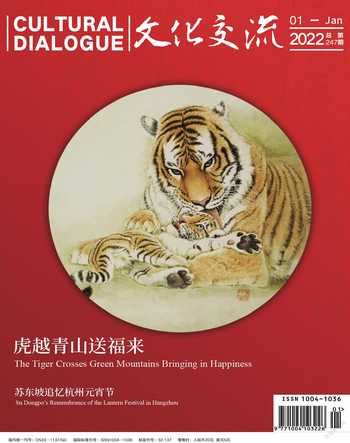My Encounters with the Song Dynasty Culture
By Gorodishchenskaia Ekaterina
As a child I loved to learn about the history of different countries and their cultures. Unfortunately, in the mid-1990s the internet was not as accessible as today, so the main source of new information for me was books from the city library. And then, one day, a huge red book with a patterned binding caught my attention. It was a textbook on the history and culture of ancient China. It captivated me with its bright pictures. The outfits, the colorful decorations — all of it was simply mesmerizing. It was from this book that I had first learned about the ancient Song dynasty (960-1279). But to my regret, I couldn’t find more information at that time.
What was my surprise when, after so many years, fate took me to the capital of this ancient dynasty, the city of Hangzhou. Hangzhou is a city in China that enjoys a fame similar to Florence or Vienna in Europe: it has an aura of tradition, wealth and beauty. It is the administrative center of Zhejiang province, about 180 km south of Shanghai at the mouth of the Qiangtang River. One of the most famous places here if you ask locals is Xihu, or the West Lake and its embankments; indeed, it is said that the emperors in Beijing twice commanded to “reproduce” it in their garden palaces. Unsurprisingly, Hangzhou has long been regarded, since the Song dynasty, as a place of “exalted” living.
Hangzhou is a very large and old city, with a long history. At the moment, it is a striking example of a rapidly developing metropolis, but still keeps the spirit of tradition: here you can see the ancient streets naturally mixed with modern skyscrapers. The city impresses through its beauty, with abundntt parks, bridges and charming mountain views. It’s not for nothing that a widely known proverb in China says: Above there is Heaven, and below there are Suzhou and Hangzhou (Shang You Tiantang, Xia You Suhang 上有天堂,下有蘇杭).
If you are interested in the Song dynasty and its traces in Hangzhou, you can visit the Southern Song Dynasty Guan Kiln Museum, the Hangzhou Songcheng or the Hangzhou Song Dynasty Town, the Grand Canal and many others. One of my favourite is the Hangzhou Song Dynasty Town. As a theme park, it combines the culture of the Song dynasty and the natural scenery of West Lake. It displays a prosperous scene of the Song dynasty by employing an integration of realistic and romantic techniques and you are able to see and feel what Hangzhou was like during that time. Moreover, the night view of the Hangzhou Song Dynasty Town will definitely take your breath away.
Oddly enough, it is in fact my job that has helped me to learn more about the Song dynasty and the history of Hangzhou. I am currently working as an English teacher in ECO Kindergarten, which belongs to the Zhejiang Normal University Education Group. Our kindergarten places great emphasis on culture and traditions. Through special methods, children learn their history from an early age, and at the very beginning I found myself immersed in this process and started to learn together with them. The topic of our last project with the children, for example, was the Song dynasty. The children were exposed to many different areas: calligraphy, costumes, cultural characteristics, and even the architectural traditions of the dynasty. For more immersion, children were invited not only to learn historical facts, but also to visit museums or historical places in the city with their teachers or parents, and to design, sew and make things themselves and be fully involved in the creative process. The intended result was a diorama of an entire street from the Song dynasty era, built in our kindergarten.
I love watching the children inventing, imagining and creating. Thanks to this approach, no child is left idle. Some learned the process of making paper and tried their hands on it. Some studied the Song dynasty architecture and tried to build it. And some studied the outfits that were the hallmark of that dynasty and reproduced them. Of course, all has been done with materials they could find and with the help of their teachers and parents, as they showed their curiosity and shared their ideas. Such activities not only help children develop their imagination and creative thinking, but also introduce them to China’s history, culture and traditions, and, more importantly, the significance of their preservation and inheritance.
And now, those very pictures from my childhood books come to life right before my eyes, thanks to the efforts of my students. And I am very proud that I can consider myself at least a little bit involved in their endeavors to accumulate knowledge.

